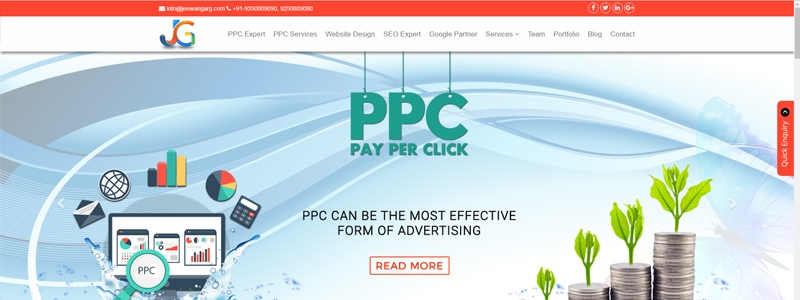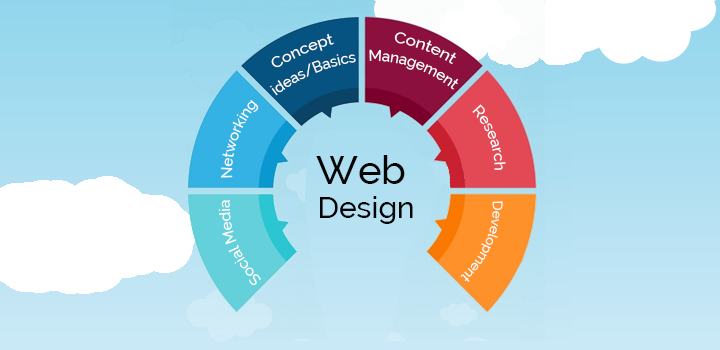
Having a website today is as crucial as having sales for a business. Now with the prevalence of Internet, things have become very competitive and it’s all a virtual world as it offers a wide array of endless opportunities and comfort. You can pay your electricity bills online, buy tickets or transfer funds to a bank. Business without a website won’t be a profitable concern now.
Business on a website is all about the way it is created and served. Having a website is not the destination, but to identify which one is more appropriate is the key to your success. Leads to conversions take time through SEO promotion, but the capability of your site will still count. You could either have a static website or a dynamic website to carry on performance.
Let’s discuss the difference between the two and how they serve upto their expectations and results:
A website can be static or dynamic, but to have the right one, you need to judge the objectives of making a website and analyze which one would be better in terms of functionality. Say for eg, what content you want to post, if you want to have monetary transactions, etc. For a full-fledged professional website, a dynamic one is better. Why we think so, just check this info:
WHAT IS STATIC WEBSITE: A more basic website made up of HTML files and tags, its structure, content and design remains the same unless changed by a web developer and needs a web expert to change it. It is not so complex to make and is cheap to make.
Advantage of Static Website:
- It is an easy to develop site as it has only a few pages and is used for small business.
- Static websites consume less time to create and operate.
- It is a cost effective site because it requires less functionality and reasonable rates to host it.
- Static sites are easy to handle so, no specialist is required to control it.
Some demerits of a Static Website:
- Static sites can require frequent updates, but to materialize them, the sites needs frequent costing. Although it saves costs during development, it sounds expensive in the long run if you update it frequently.
- Static websites are time consuming during update because every single page has to be treated separately.
- For smaller changes also, you might pay to a web developer if you don’t know HTML language and web development basics.
- It cannot be optimized to give a good user experience.
Example of Static Website:

WHAT IS DYNAMIC WEBSITE: A dynamic website can be called an advanced form of a static website and deploys newer technology in web development. As it requires heavy server scripting like PHP, JSP, CSS, etc., it automates to the latest updates easily and is highly optimized. But it is expensive to make in the initial stage, yet it’s benefits make it worthy!
Merits of a Dynamic Website :
- A dynamic website automatically updates itself to new changes.
- It attracts more visitors and promises conversations since it is highly user friendly.
- It is good for SEO because this design is accepted by Google standard and it offers good user experience due to automatic update of the content.
- For frequent updates, anyone can make a change hence a web developer is not needed so, recurring costs are saved.
- New pages can be added to the current.
Few demerits of a Dynamic Website :
- A dynamic website’s initial making cost is high, so small business might not afford it.
- It requires more time to build.
- You must have a content management system to use it.
Example of Dynamic Website:

Final Verdict: Which website you should use mustn’t be an issue now. Since the world has heavily becoming a digital marketplace and static websites don’t count there, a dynamic website is the right choice if you need to do it big. It is easy to control and build multiple landing pages on your site for your marketing campaign.
We always aim for good traffic and improved search engine ranking, which only an SEO can provide so you can easily incorporate the e-commerce channels in your website. You are free to trigger social media optimization by putting social media buttons on it.
Google Analytics helps dynamic sites with optimum ranking tools. Furthermore, we can speculate user-generated content to check for improvement in our products. A dynamic site provides full coverage of a visitor’s details, the links he has clicked, time spent by him and keywords used, etc., so dynamic website is the best option available.
Conclusion: While a static site might have only short-term benefits on cost but the most important aim of making a site inclusive and business oriented misses out on static. If we forego only small term gains and look for real, recurring business profits, we find that dynamic sites are far advantageous over static ones. Although being expensive initially, dynamic websites have no other disadvantage to be seen and are the clear winners of today’s evolving digital business!










